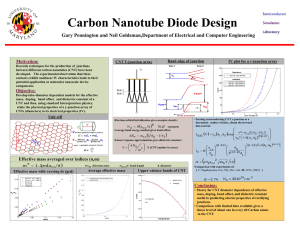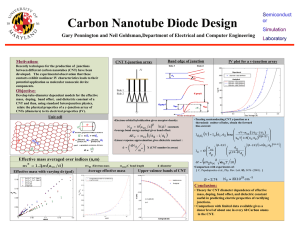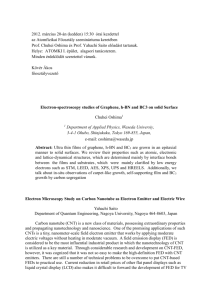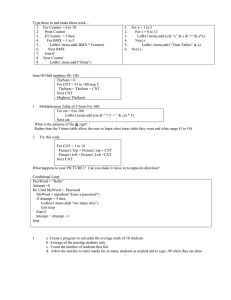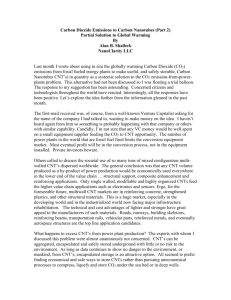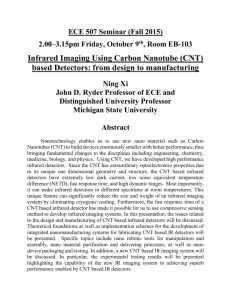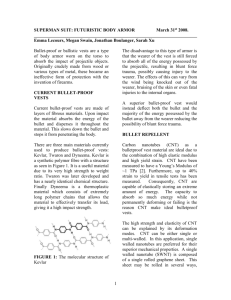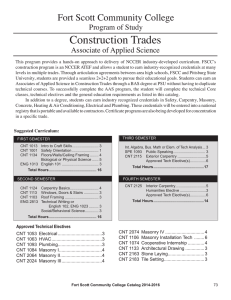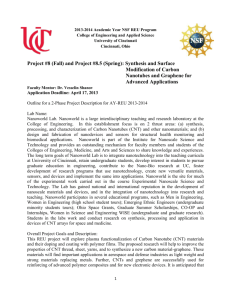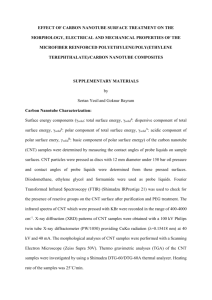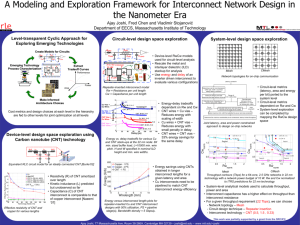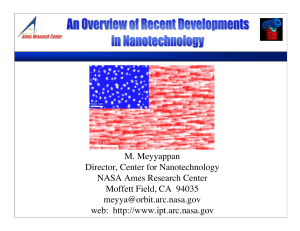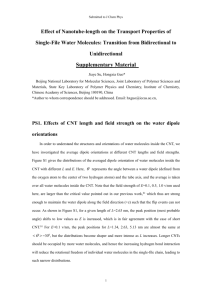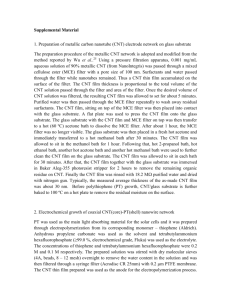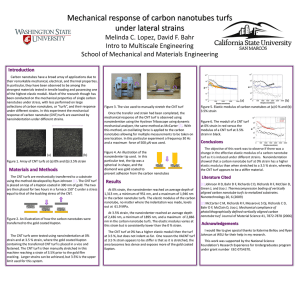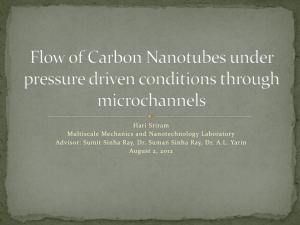Carbon Nanotubes: Properties, Problems and Potential
advertisement
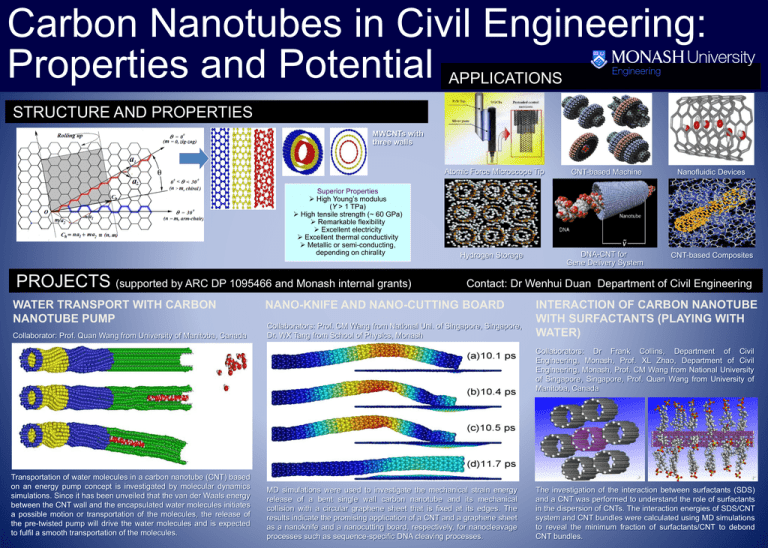
Carbon Nanotubes in Civil Engineering: Properties and Potential APPLICATIONS STRUCTURE AND PROPERTIES MWCNTs with three walls Atomic Force Microscope Tip Superior Properties High Young’s modulus (Y > 1 TPa) High tensile strength (~ 60 GPa) Remarkable flexibility Excellent electricity Excellent thermal conductivity Metallic or semi-conducting, depending on chirality PROJECTS (supported by ARC DP 1095466 and Monash internal grants) WATER TRANSPORT WITH CARBON NANOTUBE PUMP Collaborator: Prof. Quan Wang from University of Manitoba, Canada Hydrogen Storage CNT-based Machine Nanofluidic Devices DNA-CNT for Gene Delivery System CNT-based Composites Contact: Dr Wenhui Duan Department of Civil Engineering NANO-KNIFE AND NANO-CUTTING BOARD Collaborators: Prof. CM Wang from National Uni. of Singapore, Singapore, Dr. WX Tang from School of Physics, Monash INTERACTION OF CARBON NANOTUBE WITH SURFACTANTS (PLAYING WITH WATER) Collaborators: Dr Frank Collins, Department of Civil Engineering, Monash, Prof. XL Zhao, Department of Civil Engineering, Monash, Prof. CM Wang from National University of Singapore, Singapore, Prof. Quan Wang from University of Manitoba, Canada Transportation of water molecules in a carbon nanotube (CNT) based on an energy pump concept is investigated by molecular dynamics simulations. Since it has been unveiled that the van der Waals energy between the CNT wall and the encapsulated water molecules initiates a possible motion or transportation of the molecules, the release of the pre-twisted pump will drive the water molecules and is expected to fulfil a smooth transportation of the molecules. MD simulations were used to investigate the mechanical strain energy release of a bent single wall carbon nanotube and its mechanical collision with a circular graphene sheet that is fixed at its edges. The results indicate the promising application of a CNT and a graphene sheet as a nanoknife and a nanocutting board, respectively, for nanocleavage processes such as sequence-specific DNA cleaving processes. The investigation of the interaction between surfactants (SDS) and a CNT was performed to understand the role of surfactants in the dispersion of CNTs. The interaction energies of SDS/CNT system and CNT bundles were calculated using MD simulations to reveal the minimum fraction of surfactants/CNT to debond CNT bundles.
